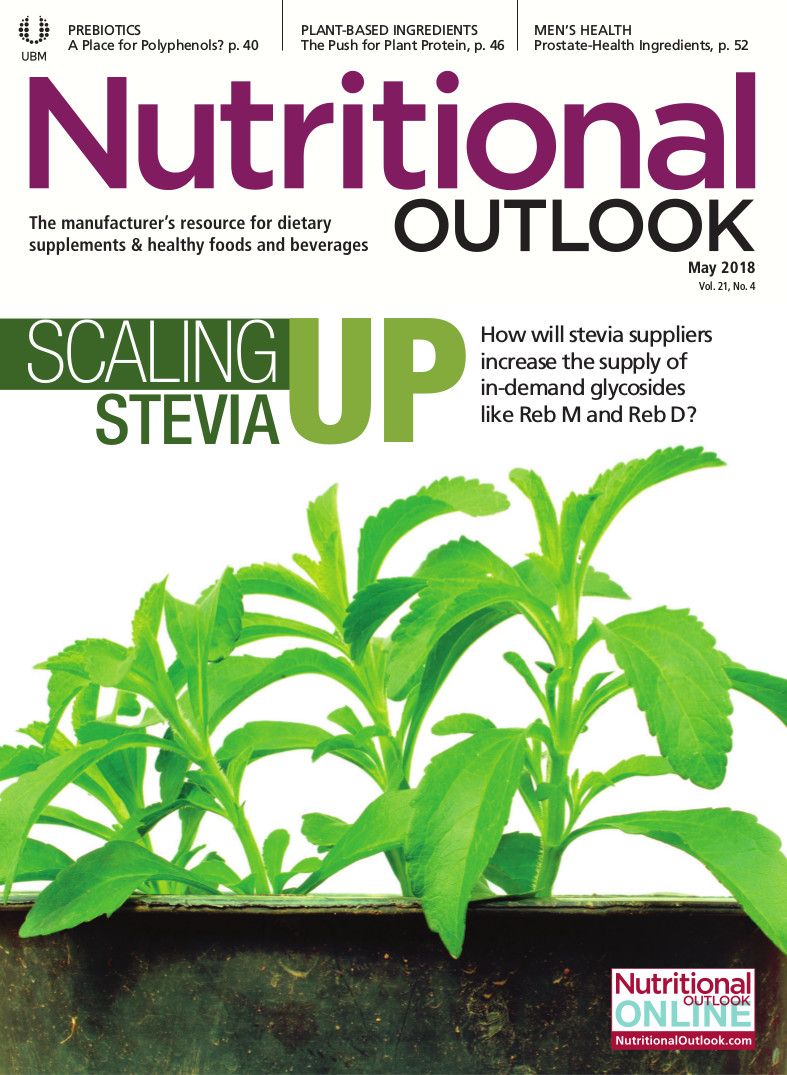What Makes Reducing Sugar in Chocolate So Challenging?
Reducing sugar is tricky because sugar generates much of the sweetness and texture in a chocolate product. Plus, using any sweetener other than cane sugar can increase manufacturing costs.
Photo © iStockphoto.com/Ekspansio

There was a time, not so long ago, when the concept of “healthy” chocolate seemed paradoxical. But today’s consumers expect to be able to have it all-and chocolate is no exception. In recent years, chocolate manufacturers have been working to innovate chocolate confections and snack bars that help consumers meet their health goals.
Representatives from Cargill (Minneapolis), Ingredion (Westchester, IL), and cocoa supplier Barry Callebaut (Zurich, Switzerland) tell Nutritional Outlook that sugar reduction remains one of the most popular ways of improving the health profile of a chocolate product. Julie Emsing Mann, global protein program manager, Ingredion, says that sugar content is still a key focus in the chocolate category for reasons including the push for sugar taxes in some countries, the addition an “added sugar” line on FDA’s revised Nutrition Facts label here in the U.S., and the proliferation of front-of-pack calorie claims, among others.
But reducing sugar is tricky because sugar generates much of the sweetness and texture in a chocolate product, says Fatemeh Khadem, senior technical services manager, Cargill Cocoa & Chocolate. Plus, using any sweetener other than cane sugar can increase manufacturing costs. According to Barry Callebaut’s Mark Adriaenssens, vice president, research and development, Americas, and Laura Bergan, director, innovation and market development, North America: “Any [sugar] replacement or change in sweetening…typically will mean a cost increase with the raw materials.” They state that, at present, polyols such as the low-calorie sugar alcohols erythritol and maltitol are more expensive than cane sugar. So is stevia (Stevia rebaudiana), though stevia “is only used in small percentages within the chocolate recipe,” they say.
Today, stevia is one of the most popular zero-calorie sweeteners. The high-intensity sweetener has come a long way since it first arrived on the scene, and Ingredion’s Mann says that globally, an increasing number of premium low- or no-sugar confectionery products are being formulated with stevia-based sweeteners.
And formulating with stevia has never been easier: “The challenge of balancing taste and meeting sugar-reduction targets with stevia is no longer as daunting as it was for formulators. It requires the best-tasting stevia sweeteners, those without the bitter aftertaste, to allow for higher levels of sugar reduction.” Mann says that SweeGen’s Bestevia Reb M, a 95%-pure stevia leaf sweetener distributed by Ingredion, provides a sugar-like taste, without the bitter aftertaste often associated with alternative sweeteners.
But no matter which lower-calorie alternative sweetener a manufacturer uses, it is “critically important that healthier chocolates still taste good,” say Adriaenssens and Bergan. Finding the right ingredients that can serve as one-to-one replacers for sugar or fat, while retaining the same flavor and texture of the original product, is a challenge. Oftentimes, it requires ingredient trade-offs, they say.
For instance, while stevia and other high-intensity sweeteners do a pretty good job of replacing sugar in chocolate, additional ingredients may be needed to achieve some of the other functional properties of sugar, says Ravi Nana, polyols technical service manager, Cargill. Cargill offers its zero-calorie natural Zerose erythritol, which Nana says replaces sugar’s bulk at a one-to-one ratio and pairs well with the company’s ViaTech or EverSweet stevia sweeteners. Both Barry Callebaut and Ingredion also embrace polyols as sugar replacers. Barry Callebaut offers dark and milk no-sugar-added chocolates where erythritol functions as the main sugar replacer.
Ingredion’s polyols can also add sweetness to chocolate sauces and syrups without adding calories, says Afrouz Naeini, senior marketing manager, sweeteners and beverage, Ingredion. Last year, Ingredion launched its portfolio of VersaSweet low-sugar syrups, from both corn and tapioca sources.
Manufacturers can also reduce the sugar content of a chocolate product by adding a functional ingredient like fiber. Adriaenssens and Bergan say Barry Callebaut has focused its innovation on growing its Sweet Refrain portfolio of reduced-sugar and sugar-free chocolates, whose sugar content is replaced by Barry Callebaut’s proprietary fiber blend.
Cargill’s Oliggo-Fiber chicory root ingredient can likewise provide formulators with an effective sugar alternative, says Pam Stauffer, global market programs manager, Cargill. “Mildly sweet in its own right, chicory root fiber can help modulate the flavor of some high-potency sweeteners,” she says. Fiber also functions as a bulking agent, she adds, which can help to improve the texture and mouthfeel of a reduced-sugar chocolate product.
Also read:
Protein Is Trending in Chocolate, But Comes with Formulating Challenges

Prinova acquires Aplinova to further increase its footprint in Latin America
April 7th 2025Prinova has recently announced the acquisition of Brazilian ingredients distributor Aplinova, which is a provider of specialty ingredients for a range of market segments that include food, beverage, supplements, and personal care.





















